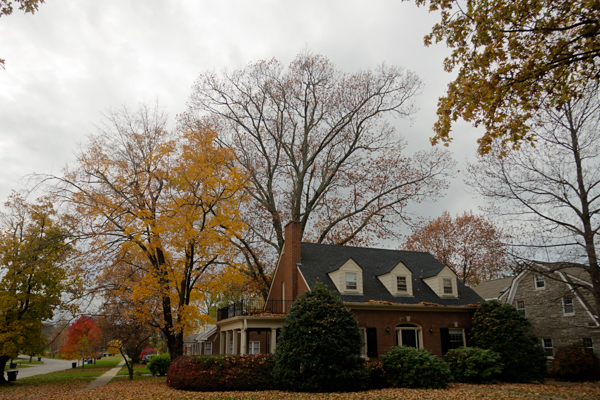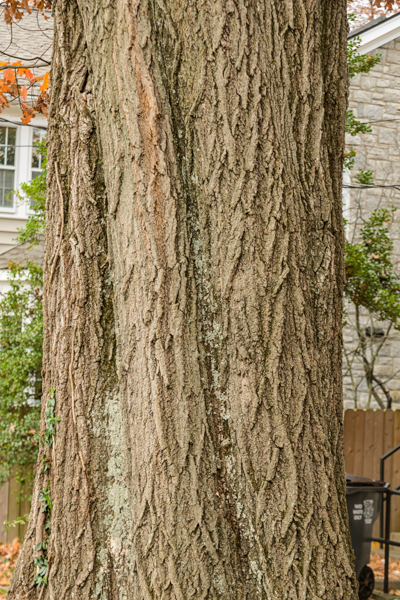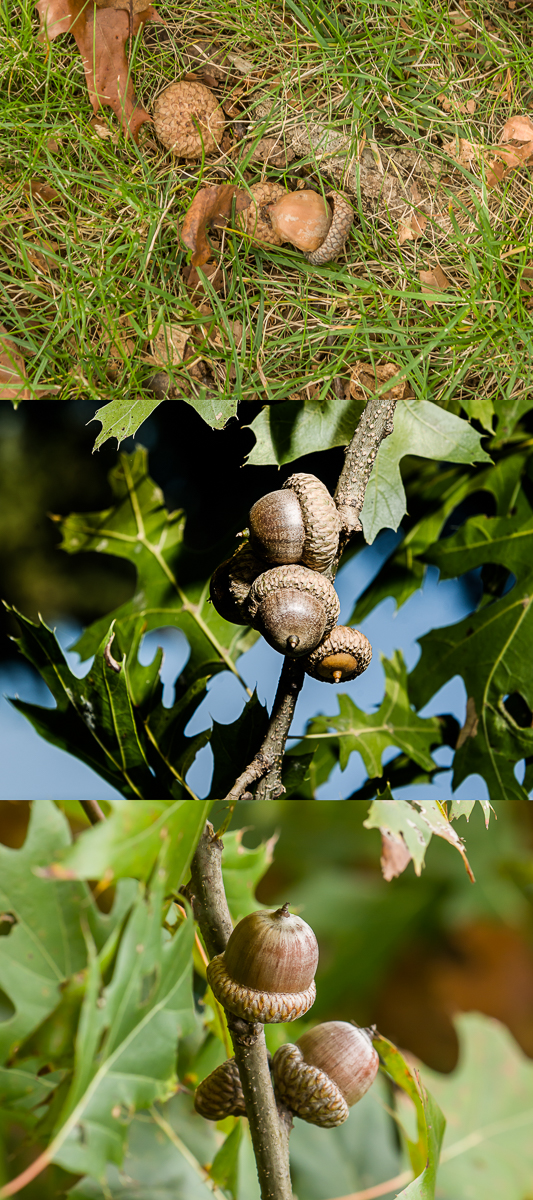Update: In response to some questions, we have added a description of differences between Northern red oak, Shumard oak and riparian oak at the end of this article.
Near Ashland in Lexington, we found a beautiful, large riparian oak. Riparian oak is a hybrid between Northern Red Oak, Quercus rubra, and Shumard oak, Quercus shumardii. Its Latin name is Quercus x riparia or Quercus rubra x shumardii. The letter x indicates a hybrid.
What makes this a hybrid? Some of its features look like Northern red oak, including the bark, the size of the leaves, the size of the acorns and some features of the buds. Other features look like Shumard oak, including the leaf lobes and some features of the buds.
This tree is growing behind a house near Ashland, the home of Henry Clay. In the 19th century, this tree was on the Ashland estate property. It does not bear the characteristics of a very old tree, and I suspect that it was planted on Henry Clay’s estate. Clay planted a large number of trees on his estate, and it is possible that this tree was one of them. In the early 19th century, it was common to collect trees from the wild for transplantng into estates. This tree may have grown somewhere else before transplanting. This is all based on an educated guess – without knowing the age of the tree, we can’t determine its origin.
Hybrid oaks are common throughout the Bluegrass, especially in the red oak group. Some forests, such as Quiet Trails State Nature Preserve in Harrison County, seem to consist mostly of hybrid red oaks. Shumard oak hybrids with pin oak, Northern red oak, shingle oak, and black oak, among others.
Differences among the oaks
- Leaves: Northern red oak leaves are large and regular with little variation. Leaf surface is dull. Lobes are shallow and open with a U shape. Shumard oak leaves are smaller and quite variable. Leaf surface is shiny. Lobes are shaped like a thumb. Riparian oak: Leaves are large and the surface is dull like Northern red oak, but variable like Shumard oak. Lobes are thumb-shaped like Shumard oak.
- Acorns: Northern red oak acorns are stout, barrel shaped and large. Shumard oak acorns are less stout and smaller. Riparian oak acorns resemble Northern red oak.




Pingback: Oak stories for 2014 - Venerable Trees